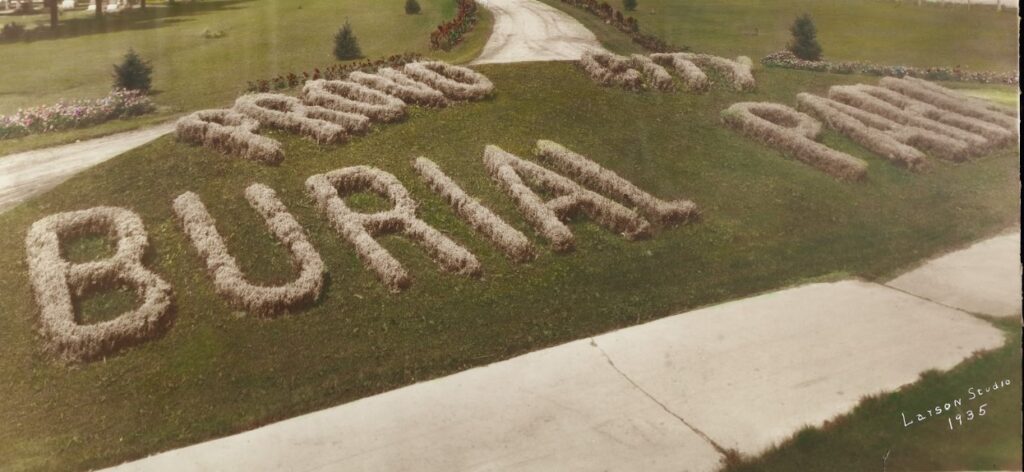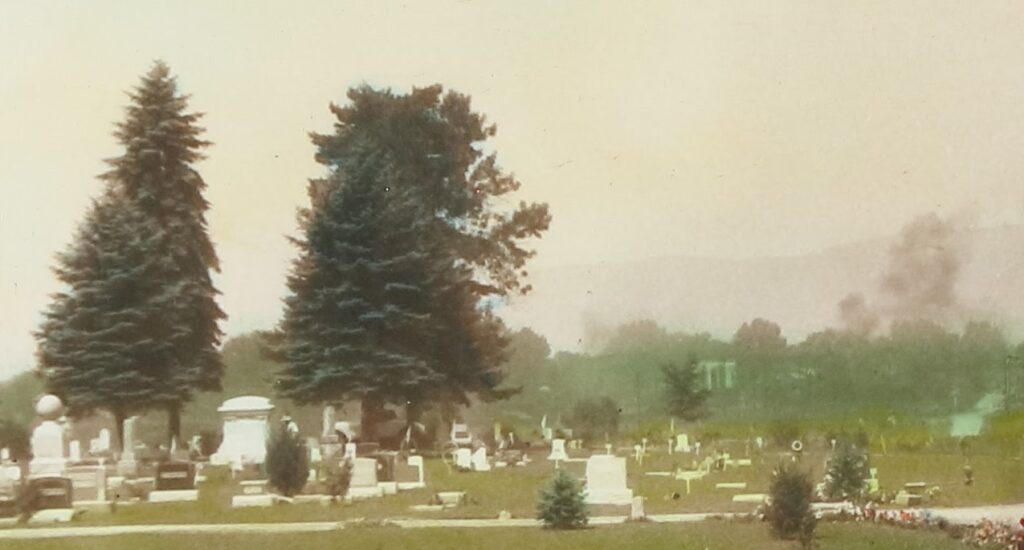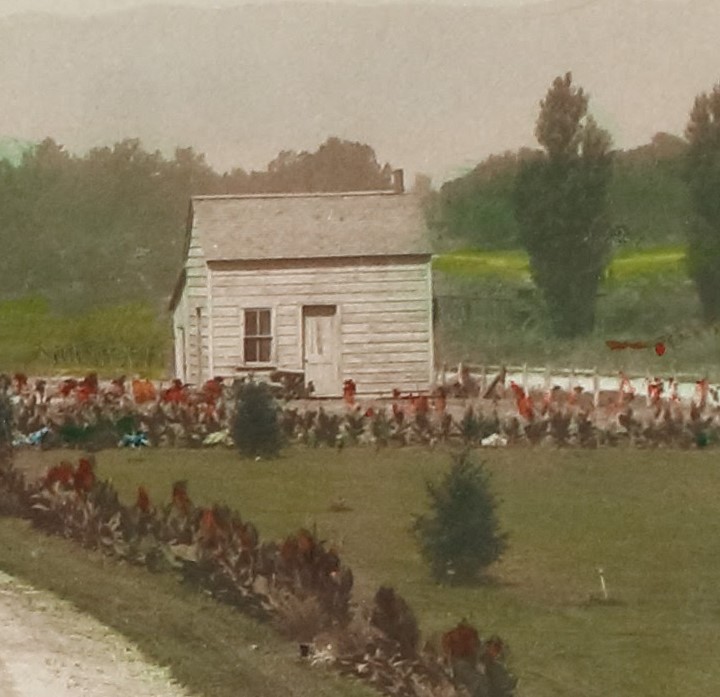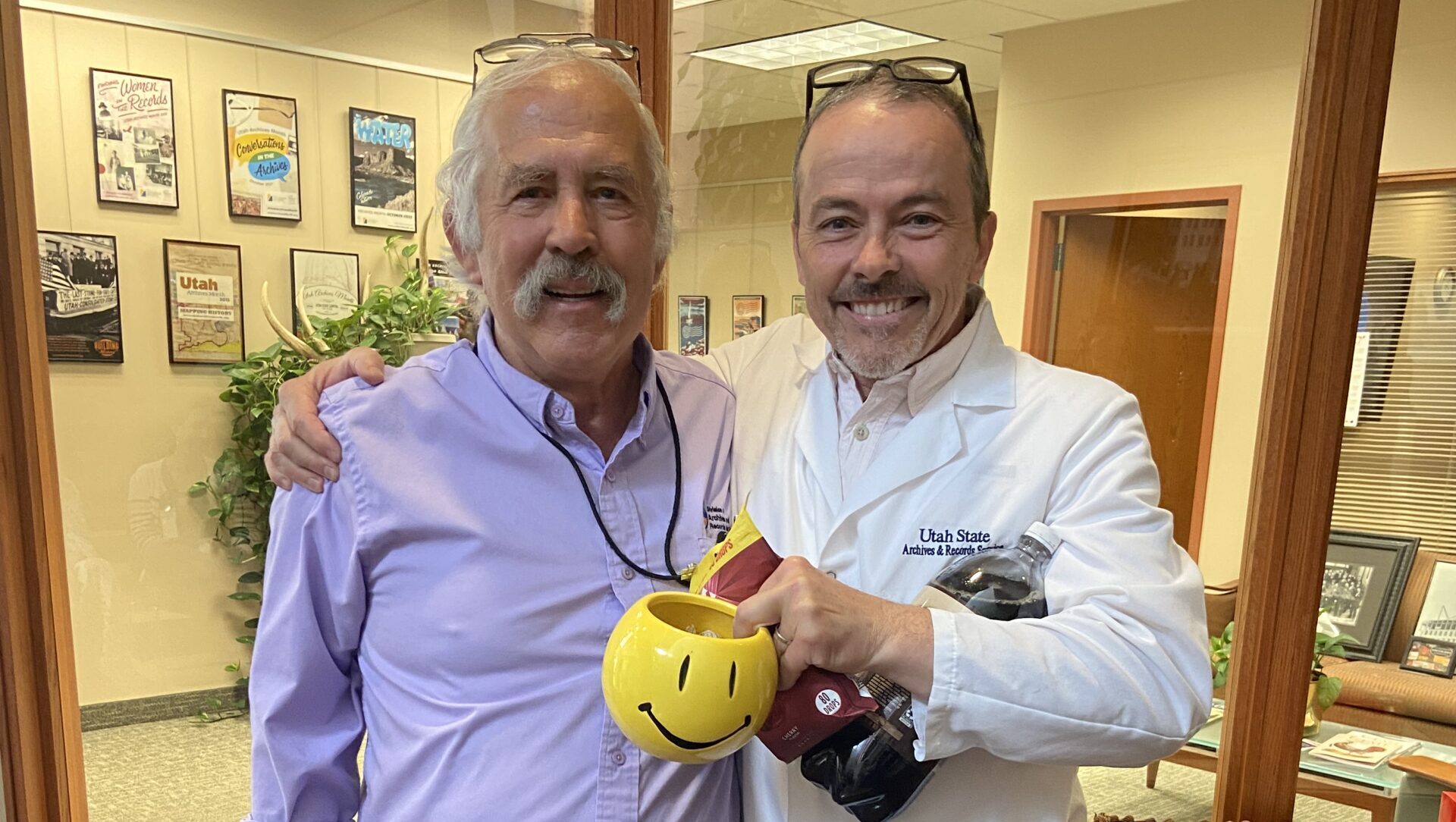
Bringing the Provo City Cemetery to Life: An Examination of Hand Colored Photography
Like the landscape paintings of famed French artist Claude Monet, this hand-colored 1935 photograph from Larsen Studio of the Provo City Cemetery comes to life; this once monochromatic image of a nature scene was painted with washes of color and speckled with details to bring audiences vivid representations of landscapes that they may have experienced in real life. The colorist perhaps even took a few artistic liberties to overly saturate colors and exaggerate details, almost like a hand-painted Instagram filter.
Larsen Studio operated in Provo City as early as 1902. The studio operated primarily as a portrait studio, but as landscape photography and commercial prints became popularized in the 1920s and 30s, the business expanded into commercial photography. In 1937, studio owner T.C. Larsen noted in the local paper that “a project occupying considerable time at Larson Studio right now is that of photographing scenic spots in Utah and producing them in natural colors.” (Daily Herald, January 1, 1937). This photograph of Provo Burial Park is likely one of many in a series of Utah scenes produced by the company.

When taken in from afar the image displays a row of playful hedged letters, declaring you are entering the Provo City Burial Park. The hedges evoke a sense of joyfulness and harkens back to a time when cemeteries were seen as places to celebrate and entertain.

But when you zoom into the digital copy of the image you can begin to see the artistic details employed by Larsen Studio, like the thin gradient of green washes over the trees and background landscapes, giving the photograph a spring-like vibrancy.

Little speckles and dollops of red and green paint make up rows of tulips that line the road, directing guests to the center of the cemetery. The artist likely took some creative liberties in adding a variety of vibrant colors that may or may not have been represented in real life. In this particular part of the photo, it appears that our artist carefully removed a person that may have been pictured along the road, which might have distracted from the picturesque scene. You can faintly make out the ghostly shape of a person standing amongst the flowers.

Certain elements of the photograph were left untouched—like the sexton’s house just behind the rows of tulips—reminding the viewer of the monochromatic origins of the original picture.
The digital image of this hand-painted photograph invites the viewer to take the opportunity to observe this piece from a different perspective. A closer examination provides the opportunity to study and appreciate the artistry and hand-coloring techniques employed by Larsen Studio. It also allows us to ponder the deliberate choices of the artist, asking ourselves if what we see is true to life or imagined reality.
Recent Posts
Authors
Categories
- Certification/
- Digital Archives/
- Electronic Records/
- FAQ/
- Finding Aids/
- General Retention Schedules/
- GRAMA/
- GRAMA FAQs/
- Guidelines/
- History/
- Legislative Updates/
- News and Events/
- Open Government/
- Records Access/
- Records Management/
- Records Officer Hub/
- Records Officer Spotlights/
- Research/
- Research Guides/
- RIM FAQs/
- Roles and Responsibilities/
- State Records Committee/
- Training/
- Uncategorized/
- Utah State Historical Records Advisory Board/




